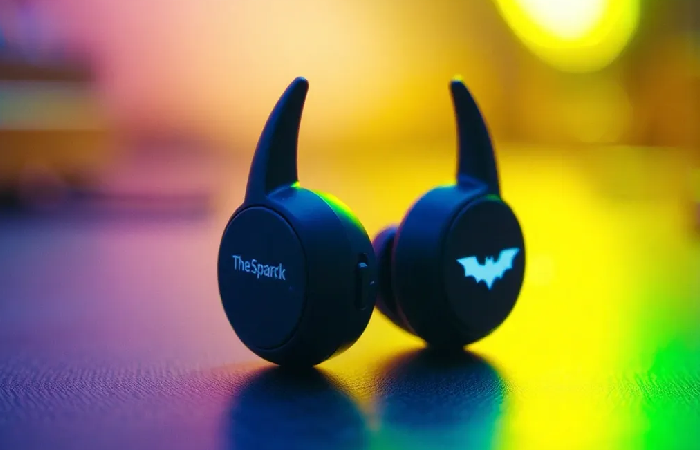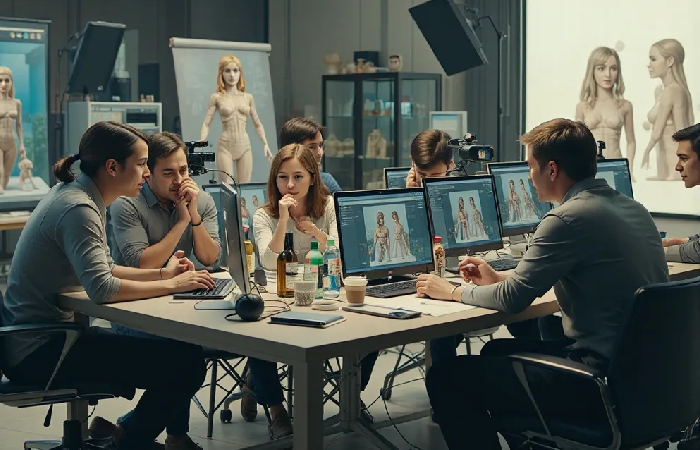AI Models Transforming Youth Sports with GameRun

Large Visual Models (LVM) in Sports Analysis
Large Visual Models (LVM) are advanced AI systems trained on massive visual datasets to interpret images and video (Large Vision Models: What Are They, and How Can Agencies Use them? | StateTech). In sports, LVMs act like “big-picture” analysts – they can recognize players, objects (like balls or pucks), and complex patterns across an entire game. For example, a large vision model can process full-game footage to identify key events (goals, hits, scores) and track all players simultaneously.
This is similar to how a large language model reads lots of text, but here the LVM “reads” the visual action on the field or ice (Large Vision Models: What Are They, and How Can Agencies Use them? | StateTech). GameRun leverages LVMs to crunch game film for deep insights – from classifying plays in a football game to evaluating a soccer team’s formation over a match. These models excel at object detection and image classification, which means they can automatically spot when a hockey player takes a shot or when a baseball leaves a pitcher’s hand (Large Vision Models: What Are They, and How Can Agencies Use them? | StateTech). By analyzing entire games in detail, LVMs provide coaches and athletes a wealth of data that was previously only available with professional human video analysts.
Small Visual Models (SVM) on the Edge
While LVMs handle comprehensive analysis, Small Visual Models (SVM) focus on quick, real-time tasks. SVMs are lightweight computer vision models that run on edge devices – like cameras, drones, or wearables right at the game venue. These models are “small” in that they require less computing power, so they can operate instantly on a device without needing a supercomputer or cloud server. GameRun uses SVMs to deliver instant feedback during games and practices. For instance, an AI camera at a youth soccer match might use an on-board SVM to follow the action, tracking the ball and players live (Veo 2: Revolutionizing Sports Video Analysis with AI - DEV Community). This on-device processing means coaches and parents can get immediate stats and video highlights even before the data is sent to the cloud. One real-world example is the Veo sports camera, which uses built-in AI to track the ball and players in real time, effectively acting as an autonomous cameraman (Veo 2: Revolutionizing Sports Video Analysis with AI - DEV Community). It captures every pass and shot without human control, then hands off the footage for deeper analysis later. In GameRun’s approach, SVMs at the edge handle the immediate “eyes on the game,” while LVMs later provide the “brain” for deeper insight. This combo maximizes speed and detail – instant analysis on the field, with comprehensive reports after. Notably, even under the hood, GameRun’s platform uses edge AI for tasks like live streaming; their system can process video inside a camera or drone for instant playback, and then upload data for more intensive analysis in the cloud (AI Evens the Playing Field in Sports - Western Digital Corporate Blog) (AI Evens the Playing Field in Sports - Western Digital Corporate Blog). This layered model of small and large visual AI ensures youth sports programs get timely information without missing out on rich insights.
AI Analysis of Gameplay and Player Performance
AI-driven visual models are revolutionizing how coaches and athletes analyze gameplay and individual performance. Computer vision systems can now break down film similarly to a pro scout. For example, in ice hockey, an enthusiast built a custom AI model that tracks players and teams on the ice and even tallies basic performance statistics from game video (Spicing up Ice Hockey with AI: Player Tracking with Computer Vision | Towards Data Science) (Spicing up Ice Hockey with AI: Player Tracking with Computer Vision | Towards Data Science). This means even at youth tournaments, every pass, shot, and player shift can be logged automatically by AI. In soccer, advanced models (like GameRun’s LVMs) can map players’ positions and ball movement throughout a match, revealing patterns like how a team builds an attack or where defensive breakdowns occur. A recent project had players wear GPS trackers while AI analyzed game film; the system gave detailed feedback on positioning, passing accuracy, and decision-making, which led to significant performance improvements in a collegiate soccer team (AI Evens the Playing Field in Sports - Western Digital Corporate Blog). These same techniques trickle down to youth sports – measuring how far and fast a midfielder runs in a game, or how well a hockey forward backchecks, all through AI analysis. In youth baseball, AI models can evaluate a pitcher’s throwing motion or a batter’s swing by analyzing video frame-by-frame. For instance, AI can detect the angle of a batter’s hips and shoulders and compare it to an optimal swing pattern. This helps young players adjust their form. Similarly, computer vision can track a baseball’s trajectory off the bat, estimating exit velocity and launch angle (metrics once only available with expensive pro equipment). By obtaining these insights, coaches can provide data-driven feedback: a baseball coach might point out that a player’s swing is slightly late after AI highlights that most hits went to the opposite field, or a soccer coach might show a player their heat map, indicating they need to cover more ground on the left side. Overall, AI models turn raw footage and sensor readings into actionable performance metrics – things like speed, reaction time, shot accuracy, and spatial positioning can be quantified for youth athletes. This level of analysis was rarely available at the youth level before, and it helps identify strengths and weaknesses with an objectivity that manual observation can miss.
Enhancing Training and Coaching with AI
One of GameRun’s most exciting contributions is using AI to enhance training sessions and coaching effectiveness. By leveraging LVMs and SVMs, the platform doesn’t just collect stats – it actually helps improve those stats. GameRun’s “AI Coach” concept uses models trained by world-class coaches to analyze practice or competition footage and suggest improvements (GameRun Fencing). A concrete example is in fencing: GameRun’s fencing AI tool lets young fencers upload their bout videos, and the AI (a model imbued with expert knowledge) reviews their footwork, sword angles, and tactics (GameRun Fencing). It then provides personalized feedback on what to improve, such as stance adjustments or timing of attacks, all of which is vetted by real fencing coaches to ensure accuracy (GameRun Fencing). Essentially, this gives athletes a virtual assistant coach, available anytime. The model might notice, for instance, that a fencer consistently drops their arm after scoring, and recommend keeping the guard up longer. In team sports, AI can suggest tactical tweaks; GameRun’s system is being developed to even propose strategy adjustments for coaches (GameRun: Revolutionizing Sports with AI and Data Analytics-GameRun). Imagine a youth football coach getting an AI-generated suggestion at halftime that the opposing defense is weak on the left side – something the AI spotted from analyzing the first half’s footage. Coaches can use such insights to make informed decisions on the fly. Training enhancement also comes from quantifying progress: AI systems track performance over time, so they can chart an athlete’s development. For instance, an AI might analyze a soccer player’s shooting technique every practice – over weeks, it can show the player that their shot power increased by 10% and accuracy by 15%. This kind of feedback is highly motivating for young athletes and helps coaches tailor training plans. In fact, GameRun’s vision includes creating a “sophisticated learning invention” that fuses data from physical sensors, GPS, and even coaches’ notes to give each athlete a detailed performance evaluation (GameRun: Revolutionizing Sports with AI and Data Analytics-GameRun). Such evaluations highlight exactly where a player can improve, whether it’s conditioning, technical skill, or decision-making. By addressing these areas with targeted drills (potentially suggested by the AI), training becomes more efficient and effective. In short, AI models transform coaching from one-size-fits-all into a personalized science, where each youth athlete gets the kind of attention and analysis previously reserved for elite professionals.
IoT Devices Driving Real-Time Analytics and Safety
The Internet of Things (IoT) has entered youth sports in the form of smart wearables and sensors, and GameRun’s platform takes full advantage of these for real-time analytics and injury prevention. Wearable IoT devices – think smartwatches, fitness bands, GPS vests, heart-rate chest straps, even smart insoles – continuously collect data on athletes. These gadgets are designed to be lightweight and unobtrusive so kids can wear them during games and practice without hindrance (IoT In Sports Analytics). They measure vital stats like heart rate, running speed, jump height, body temperature, and even hydration levels (IoT In Sports Analytics). All this data streams live to coaches and the GameRun system. With fast connectivity (Bluetooth, Wi-Fi, even 5G on the field), an athlete’s condition can be monitored in real time (IoT In Sports Analytics). GameRun’s AI then analyzes these physiological metrics on the fly, looking for patterns or red flags. For example, a sudden spike in a player’s heart rate combined with a drop in speed might signal exhaustion – the AI can flag the coach that the player needs a rest. This kind of insight is crucial for injury prevention. By tracking workload and fatigue indicators, the AI helps prevent overuse injuries and heat-related illnesses. In fact, AI systems now use wearable data to detect early signs of fatigue or injury risk, prompting timely interventions (AI Evens the Playing Field in Sports - Western Digital Corporate Blog). One report noted that combining wearables with AI allowed a soccer team’s staff to catch when players were on the verge of overexertion, leading to fewer injuries over the season (AI Evens the Playing Field in Sports - Western Digital Corporate Blog). This preventative approach is a game-changer for youth sports, where young athletes are still developing and can be vulnerable to injury if overworked.
Beyond wearables, other IoT devices include smart balls and equipment. In baseball, for instance, there are sensor-embedded balls that measure spin rate and throw speed, or bat sensors that track swing dynamics. All these feed data to AI models for instant feedback on technique. A coach could get a notification that a pitcher’s throwing motion is straying from their usual form (perhaps risking an arm injury), derived from subtle changes a sensor and AI picked up. GameRun’s integrated approach explicitly plans to use data from such physical sensors and GPS trackers to fuel its performance evaluations (GameRun: Revolutionizing Sports with AI and Data Analytics-GameRun) – meaning a player’s every sprint and movement can be quantified. Real-time analytics from IoT devices also enhance in-game strategy; for example, if a football team sees via GPS data that their cornerbacks have run significantly more than usual (indicating they’re getting tired), they might adjust the play-calling to zone defense to give those players a breather.
Overall, IoT devices act as the eyes and ears on players’ health and output, and when paired with GameRun’s AI, they translate raw numbers into actionable coaching points. The result is not only improved performance but also a focus on keeping young athletes healthy. Injury prevention becomes proactive – AI might suggest altering a training plan if it sees a player’s recovery metrics (like sleep or heart rate variability) are poor, thus avoiding injuries before they happen (Advanced Injury Prevention Chicago | AI-Powered Sports Injury Prevention Chicago) (Advanced Injury Prevention Chicago | AI-Powered Sports Injury Prevention Chicago). By embracing IoT in youth sports, GameRun and similar innovators ensure that even kids and teens get the benefits of the latest sports science: training smarter, not just harder, and staying safer through data-driven care.
Drone Sports Tracking from New Angles
Drones are literally elevating youth sports analytics to new heights. Equipped with high-definition cameras and sometimes additional sensors, drones provide a bird’s-eye view of practices and games that was hard to get before. GameRun taps into drone technology to enhance how games are recorded and analyzed. From overhead, a single drone can capture the positions of all players in something like a soccer match or football practice at once. This aerial perspective offers a comprehensive view of team formations and spacing (Sports Training to New Heights: Drones in Performance Analysis) (Sports Training to New Heights: Drones in Performance Analysis). Traditional filming might miss off-the-ball movements, but a drone sees everything. Modern drones used in sports can track moving players automatically and even hold a steady focus on the flow of the game. In fact, researchers demonstrated a drone-based tracking system that was able to follow tennis and soccer action with impressive accuracy (within a few centimeters of error) (Sports Training to New Heights: Drones in Performance Analysis) (Sports Training to New Heights: Drones in Performance Analysis). What this means for youth sports is that even a single-camera setup (a drone) can replace expensive multi-camera systems, making advanced video tracking more accessible.
The combination of drones and AI takes it a step further: drones can beam live video to GameRun’s AI models (or have an on-board SVM as mentioned) to analyze play in real time. Advanced sensors on drones now provide real-time analytics during sports events (How are Drones Changing Sports in 2024 - Blue Falcon Aerial). As the drone flies over a youth football game, for example, an AI might be analyzing the live feed to calculate each player’s running routes and speeds. Coaches on the sidelines could get instant heatmaps or see that a certain receiver is consistently getting open. Drones have been adopted by some high school football programs to film practices – the aerial footage helps coaches notice coverage gaps or alignment issues that are hard to see from the ground. GameRun’s approach can leverage such footage: an AI reviewing the drone video might suggest a defensive adjustment if it “sees” a pattern like a certain opponent always being left unmarked on the far side.
Moreover, drones aid in injury prevention and training quality too. By capturing angles that ground cameras can’t, they help ensure players are using proper techniques across the field. For instance, in soccer, a drone view could help analyze team shape to prevent players from overextending themselves to cover open space (thus avoiding fatigue). One analysis noted that combining drone footage with AI analytics can enable real-time strategy adjustments and even injury prevention, because coaches get a full-field awareness of player workloads and positions (Sports Training to New Heights: Drones in Performance Analysis). Drones also make practice more engaging for players – imagine a youth team reviewing aerial footage of their game; it’s like giving them a pro-level film session. They can better visualize spacing and teamwork, accelerating their tactical development.
Crucially, drones make these benefits available in real time. At a tournament, a drone could live-stream a game to remote coaches or scouts, with AI automatically clipping highlights. The unique vantage point improves officiating as well (though in youth games it’s more for learning): a drone ref might catch an offside or a fencing foot fault that officials miss. All told, drone tracking is advancing youth sports by ensuring no aspect of play goes unnoticed, and when paired with AI, it translates that complete picture into immediate, actionable intelligence for performance gains.
Real-World Impact on Youth Sports Development
The integration of LVMs, SVMs, IoT devices, and drone tracking is having a tangible impact on the youth sports industry. Firstly, it’s democratizing professional-grade insights. Tools like GameRun are bringing analytics that were once only available to elite athletes down to the youth level. One project highlighted how AI “democratized” advanced performance analytics for a college team, which is exactly what’s now happening in high school and youth leagues (AI Evens the Playing Field in Sports - Western Digital Corporate Blog). When a local U12 soccer team can get a post-game report similar to what a pro team gets – complete with heat maps, pass completion rates, and sprint speeds – it evens the playing field of development. Young athletes can identify areas to work on much earlier in their careers. For example, a youth basketball player might learn from AI analysis that their left-hand dribble is weaker, and then dedicate practice time to it. Over years, this targeted development produces more well-rounded athletes. It’s no stretch to say that tomorrow’s sports stars might reach higher levels thanks to the early, data-driven training they got via AI tools in their youth.
Another impact is improved safety and longevity of young athletes. By using real-time data to prevent injuries, kids stay healthier and can continue playing and improving. One cited benefit was that a team using wearable + AI monitoring saw a reduction in injuries, keeping players available throughout the season (AI Evens the Playing Field in Sports - Western Digital Corporate Blog). Fewer injuries not only means better performance but also means kids aren’t sidelined from the sports they love (and parents aren’t dealing with as many doctor visits). Over the long term, this could encourage more participation – if parents see that a program uses smart tech to keep their children safe, they’re more likely to sign them up. Additionally, injury data and prevention insights collected over many youth athletes could lead to better training guidelines industry-wide (for example, AI might discover that a certain drill tends to cause ankle injuries if done too often, leading coaches everywhere to adjust training plans).
Athlete development is also accelerated by these technologies. The feedback loop is much faster: instead of waiting for the next day’s coach meeting or the next practice to get input, a player can get feedback immediately or the same evening through an app. This helps them correct mistakes by the next game. Concrete example: a young pitcher can upload a video of today’s game and by tonight receive an AI breakdown pointing out a flaw in their throwing motion; they can then focus on fixing it in tomorrow’s practice. As a result, skills improve more rapidly. We also see mental and strategic growth: engaging with analysis tools teaches youth players to study the game. A 13-year-old soccer midfielder reviewing their positioning via an AI-generated chart is learning tactical awareness, a mental skill that usually develops much later. GameRun’s platform even envisions rating coach-player interaction and providing feedback on communication (GameRun: Revolutionizing Sports with AI and Data Analytics-GameRun), which could lead to better coaching methods and team dynamics in youth sports.
Finally, these technologies can assist in talent identification and recruitment at the youth level. AI can sift through heaps of game data to spot standout talents who might otherwise go unnoticed in the crowd (AI Evens the Playing Field in Sports - Western Digital Corporate Blog). A small-town player might not have scouts at their games, but if their stats and improvement trajectory are flagged by an AI model (for instance, showing extraordinary sprint speed or shooting accuracy for their age), it could bring opportunities to that athlete. GameRun’s data-driven approach hints at identifying “predictable stars” by comparing skill improvements across peers (GameRun: Revolutionizing Sports with AI and Data Analytics-GameRun). This could make youth sports more meritocratic, where performance data helps high-potential kids get the coaching or scholarships they need.
In summary, the convergence of AI visual models, IoT sensors, and drones in youth sports – championed by platforms like GameRun – is producing smarter, safer, and more skilled athletes. From hockey rinks to soccer fields, fencing strips to baseball diamonds, young players are benefiting from real-time analytics and AI-guided training. They’re learning faster, playing safer, and enjoying a more engaging, high-tech sports experience. The case of the collegiate soccer team using AI and wearables resulting in improved fitness and tactics (AI Evens the Playing Field in Sports - Western Digital Corporate Blog) (AI Evens the Playing Field in Sports - Western Digital Corporate Blog) is just one example of how embracing these tools can elevate a team’s play. In youth sports, the impact is just beginning to show: better coaching decisions, healthier training, and a generation of athletes who are as comfortable reviewing a performance dashboard as they are running a drill. This AI-driven revolution is truly changing the game for the next wave of sports stars.



